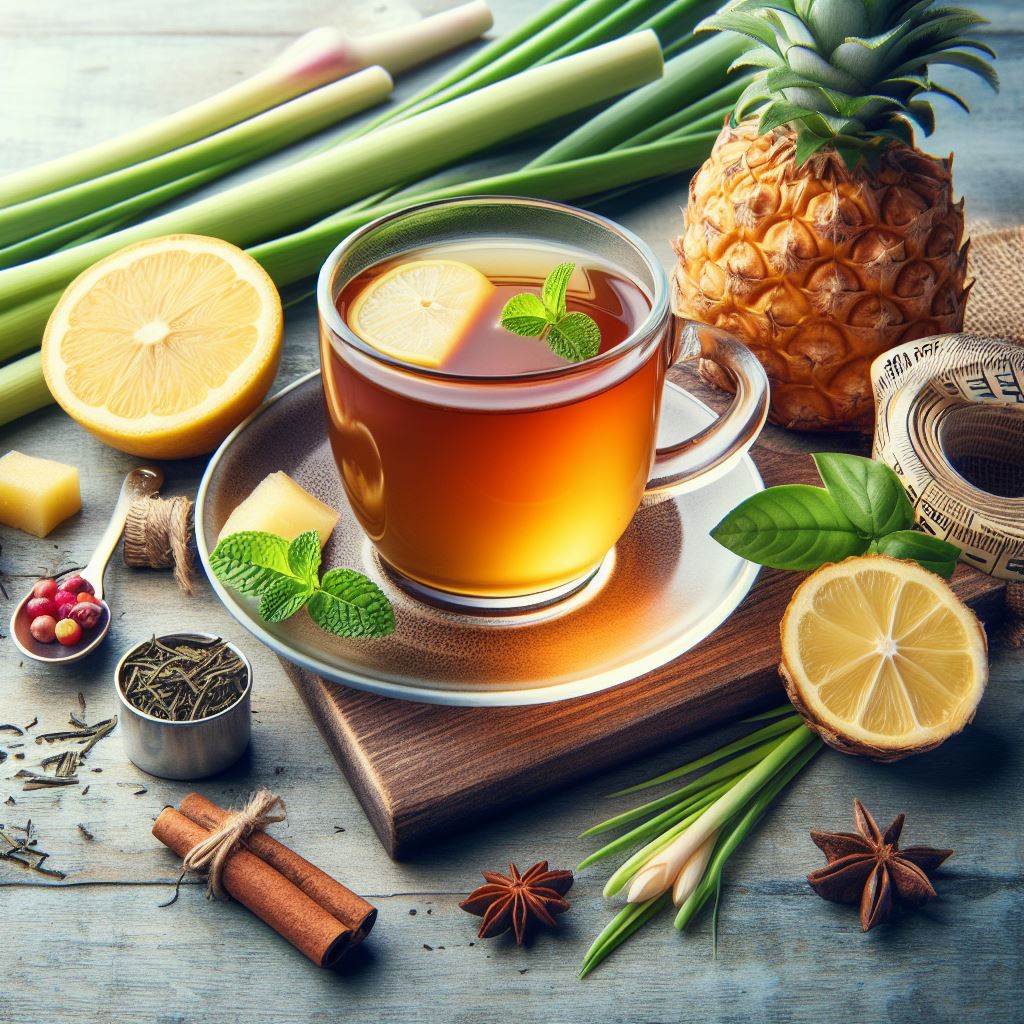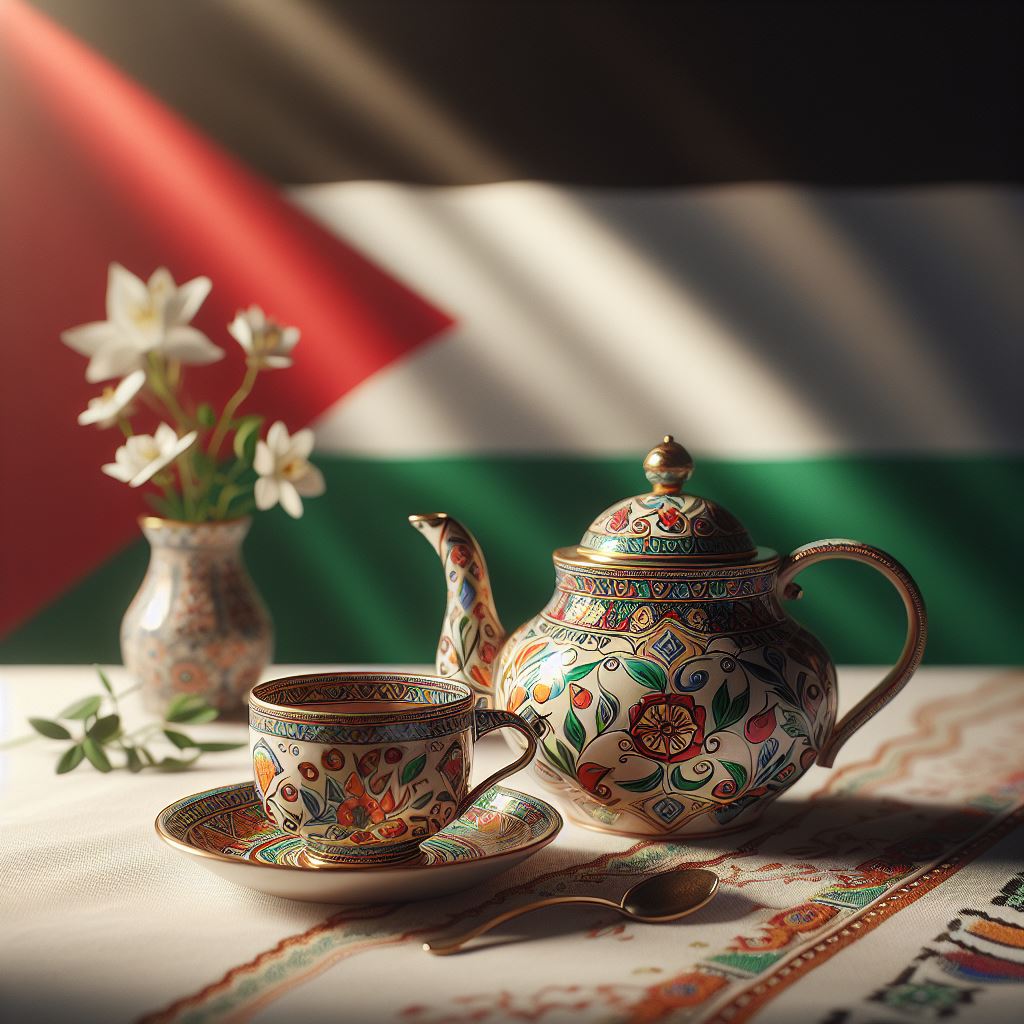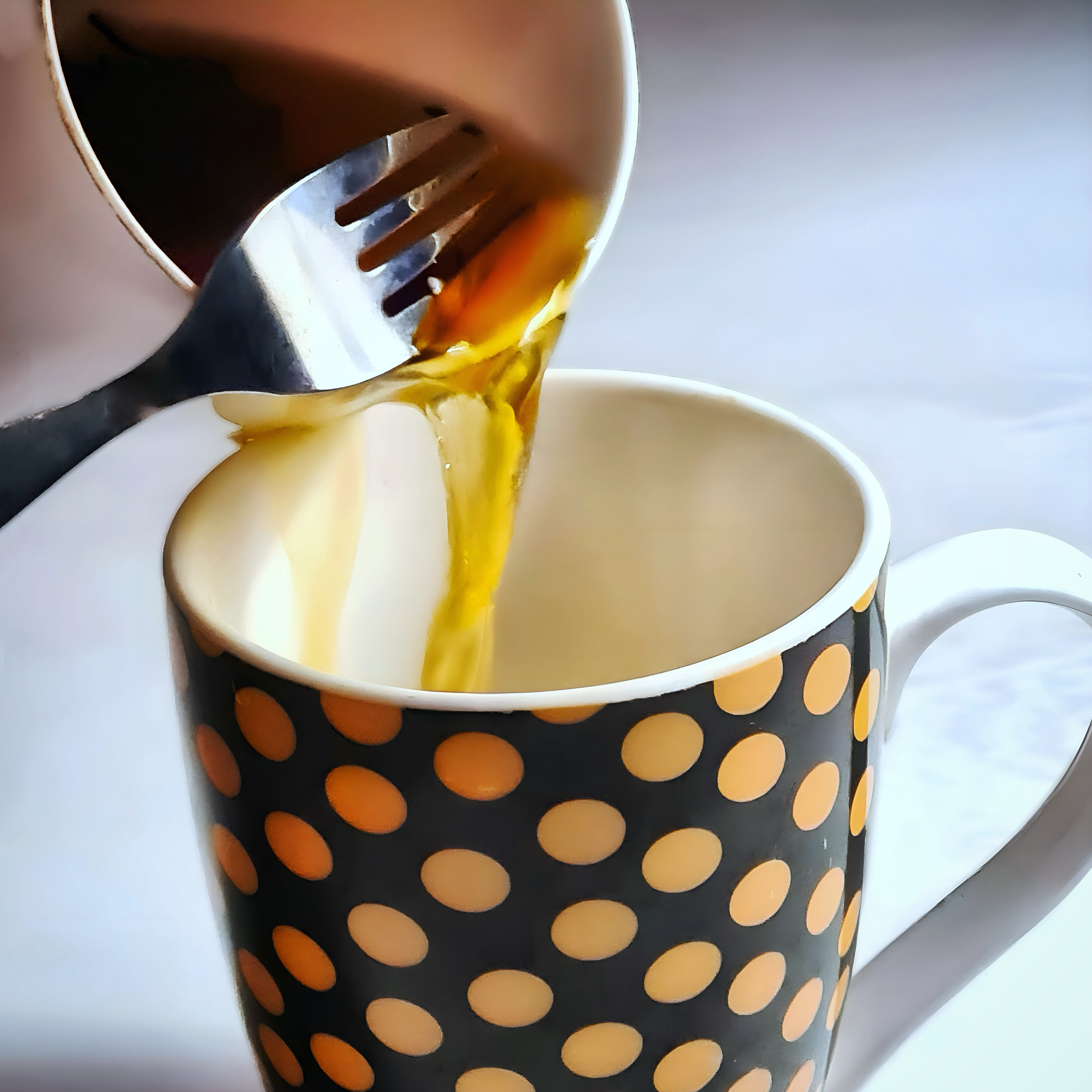Tea pots are more than just vessels for boiling water and steeping tea leaves. They are an essential part of the tea brewing process, enhancing the flavor, aroma, and enjoyment of your favorite cup of tea. Whether you prefer a classic ceramic teapot, a delicate glass gaiwan, or a seasoned Yixing clay pot, there is a tea pot for every tea lover and every occasion.
In this blog post, we’ll explore the different types of tea pots, their design and features, their brewing techniques, and their care and maintenance. We’ll also share some tips and tricks on how to use a tea pot to make the most of your tea experience. By the end of this post, you’ll be a tea pot expert and ready to brew some amazing tea!

Teapot Basics
Before we dive into the specifics of each type of tea pot, let’s go over some general aspects of teapots that apply to all of them.
Exploring Different Materials
Tea pots can be made from various materials, each with its own advantages and disadvantages. Some of the most common materials are:
• Ceramic
Ceramic tea pots are the most popular and versatile choice for tea brewing. They are durable, easy to clean, and come in a variety of shapes, sizes, and colors. Ceramic tea pots are also good at retaining heat, which is important for keeping your tea warm and flavorful. Ceramic tea pots are suitable for most types of tea, especially black, oolong, and herbal teas.
• Glass
Glass tea pots are ideal for showcasing the beauty and color of your tea leaves. They are transparent, elegant, and allow you to see the tea infusion process. Glass tea pots are also easy to clean and do not absorb odors or flavors from previous brews. However, glass tea pots are not very good at retaining heat, so they are best for teas that require lower water temperatures, such as green, white, and floral teas.
• Cast Iron
Cast iron tea pots are traditional and sturdy, often decorated with intricate patterns and designs. They are excellent at retaining heat, keeping your tea hot for a long time. Cast iron tea pots also add a subtle iron flavor to your tea, which some people enjoy. However, cast iron tea pots are heavy, prone to rust, and require careful cleaning and seasoning. They are suitable for robust and full-bodied teas, such as black, pu-erh, and roasted oolong teas.
• Clay
Clay tea pots are the most specialized and unique type of tea pots. They are made from natural clay, which is porous and absorbs the flavor and aroma of the tea over time. Clay tea pots are also shaped and fired by hand, making each one a one-of-a-kind piece of art. Clay tea pots are best for teas that have complex and nuanced flavors, such as oolong, pu-erh, and aged teas.
Understanding Teapot Shapes
The shape of a tea pot can also affect the quality and taste of your tea. Different shapes can influence how the tea leaves expand, circulate, and interact with the water. Some of the most common shapes are:
• Round
Round tea pots are the most classic and common shape for tea pots. They have a spherical or oval body, a curved spout, and a round or flat lid. Round tea pots are versatile and easy to use, allowing the tea leaves to unfurl and release their flavor evenly. Round tea pots are suitable for most types of tea, especially those with large or twisted leaves, such as black, oolong, and herbal teas.
• Gaiwan
Gaiwan is a Chinese word that means “lidded bowl”. A gaiwan is a small and simple tea pot that consists of a bowl, a lid, and a saucer. A gaiwan is used for brewing and drinking tea in the same vessel, using a special technique to hold and pour the tea. Gaiwans are ideal for teas that require multiple infusions, such as green, white, and oolong teas. They also allow you to appreciate the color, aroma, and texture of the tea leaves and liquor.
• Yixing
Yixing is a type of clay that is found in the Yixing region of China. The Yixing clay tea pots are highly prized and sought after by tea connoisseurs, as they are considered to be the best tea pots for brewing tea. When it comes to Yixing clay tea pot, they have a distinctive reddish-brown color and a smooth and glossy surface. They are usually small and have a flat or slightly curved body, a short and straight spout, and a knobbed lid. Yixing clay tea pots are known for their ability to absorb and enhance the flavor and aroma of the tea over time, creating a unique and personalized tea experience. Yixing clay tea pots are best for teas that have rich and complex flavors, such as oolong, pu-erh, and aged teas.
The Classic Teapot
Now that we have covered the basics of tea pots, let’s take a closer look at the most common and familiar type of tea pot: the classic teapot.

Classic Teapot: Design and Features
The classic teapot is the quintessential tea pot that most people think of when they hear the word “tea pot”. It has a round or oval body, a curved spout, a handle, and a lid. The classic teapot is designed to brew and serve tea in a simple and convenient way. Here are some of the main features of the classic teapot:
• Spout
The spout is the part of the tea pot that allows you to pour the tea into your cup or mug. The spout should be long and narrow, with a smooth and even opening. This ensures a steady and controlled flow of tea, without dripping or splashing. The spout should also be positioned high enough on the body of the tea pot, so that the tea does not spill out when the tea pot is tilted.
• Handle
The handle is the part of the tea pot that allows you to hold and lift the tea pot. It should be comfortable and ergonomic, fitting your hand and fingers well. The handle should also be heat-resistant, so that you do not burn yourself when the tea pot is hot. The handle should be attached securely to the body of the tea pot, preferably with a metal or ceramic joint. This prevents the handle from breaking or cracking over time.
• Lid
The lid is the part of the tea pot that covers the opening of the tea pot. It should fit snugly and securely on the tea pot, preventing heat and steam from escaping. The lid should also have a knob or a handle, so that you can easily remove and replace the lid. They will usually be made from the same material as the tea pot, or a compatible material that does not affect the flavor or quality of the tea.
• Body
The body is the main part of the tea pot that holds the water and the tea leaves. It should be spacious and deep, allowing enough room for the tea leaves to expand and infuse. The body should also have a smooth and even surface, without any cracks or chips. This should be made from a material that is durable, heat-resistant, and non-reactive, such as ceramic, glass, cast iron, or clay.
Classic Teapot: Brewing Techniques
The classic teapot is easy and straightforward to use, requiring only a few simple steps to brew a delicious pot of tea. Here are the basic steps on how to use a classic teapot:
1. Preheat:
Preheating the tea pot is an important step that ensures a consistent and optimal brewing temperature. To preheat the tea pot, fill it with hot water and let it sit for a few minutes. Then, discard the water and dry the tea pot with a clean cloth.
2. Measure:
Measuring the right amount of tea leaves is essential for achieving the desired strength and flavor of your tea. As a general rule, use one teaspoon of tea leaves per cup of water, or adjust according to your personal preference. You can use a measuring spoon, a scale, or your fingers to measure the tea leaves. Place the tea leaves in the tea pot, either directly or using a tea infuser or a filter.
3. Heat
Heating the water to the appropriate temperature is crucial for extracting the best flavor and aroma from your tea leaves. Different types of tea require different water temperatures, ranging from 70°C to 100°C. You can use a kettle, a stove, a microwave, or an electric heater to heat the water. You can also use a thermometer, a timer, or your senses to gauge the water temperature. For example, small bubbles indicate water that is around 80°C, while large bubbles indicate water that is around 100°C.
4. Steep
Steeping the tea leaves is the process of letting them soak in the hot water and release their flavor and aroma. Different types of tea require different steeping times, ranging from 1 minute to 10 minutes. You can use a timer, a watch, or your intuition to determine the steeping time. For example, lighter teas, such as green and white teas, tend to steep faster than darker teas, such as black and pu-erh teas. You can also adjust the steeping time according to your personal taste, steeping longer for a stronger brew or shorter for a lighter brew.
5. Pour
Pouring the tea is the final step of brewing and serving your tea. To pour the tea, hold the tea pot by the handle and tilt it gently over your cup or mug. Make sure to pour the tea evenly and completely, leaving no tea leaves or water in the tea pot. You can also use a tea strainer or a filter to catch any tea leaves that may escape from the tea pot. Enjoy your tea while it is hot and fresh, or add any sweeteners, milk, or lemon as you like.
Exploring Specialized Teapots
The classic teapot is a great choice for brewing and serving tea, but it is not the only one. There are also some specialized teapots that offer a different and unique tea experience. Let’s explore two of them: the gaiwan and the Yixing clay teapot.
Gaiwan

A gaiwan is a small and simple teapot that originated in China. It consists of a bowl, a lid, and a saucer. A gaiwan is used for brewing and drinking tea in the same vessel, using a special technique to hold and pour the tea. A gaiwan is ideal for teas that require multiple infusions, such as green, white, and oolong teas. It also allows you to appreciate the color, aroma, and texture of the tea leaves and liquor.
Gaiwan: Design and Features
A gaiwan has a minimalist and elegant design, with few or no decorations. It is usually made from porcelain, glass, or clay, and comes in various sizes, colors, and shapes. A gaiwan has three main features:
• Bowl
The bowl is the part of the gaiwan that holds the water and the tea leaves. It should be small and shallow, allowing enough room for the tea leaves to expand and infuse. The bowl should also have a smooth and even surface, without any cracks or chips. This should be made from a material that is durable, heat-resistant, and non-reactive, such as porcelain, glass, or clay.
• Lid
The lid is the part of the gaiwan that covers the bowl. It should fit snugly and securely on the bowl, preventing heat and steam from escaping. The lid should also have a knob or a handle, so that you can easily remove and replace the lid. This should be made from the same material as the bowl, or a compatible material that does not affect the flavor or quality of the tea.
• Saucer
The saucer is the part of the gaiwan that supports the bowl and the lid. It should be flat and wide, providing a stable and comfortable base for the gaiwan. The saucer should also have a rim or a lip, so that the gaiwan does not slide off or spill. This should be made from the same material as the bowl and the lid, or a compatible material that does not affect the flavor or quality of the tea.
Gaiwan: Brewing Techniques

A gaiwan is easy and fun to use, requiring only a few simple steps to brew a delicious cup of tea. The Gaiwan uses the same steps as mentioned before, with the pouring step being slightly different. Here are the basic steps on how to use a gaiwan:
1. Preheat
Preheating the gaiwan is an important step that ensures a consistent and optimal brewing temperature. To preheat the gaiwan, fill it with hot water and let it sit for a few seconds. Then, discard the water and dry the gaiwan with a clean cloth.
2. Measure
Measure the right amount of tea leaves to achieve the desired strength and flavor of your tea.
3. Heat
Heat the water to the appropriate temperature.
4. Steep
Steeping the tea leaves is the process of letting them soak in the hot water and release their flavor and aroma. Simply place the lid on the gaiwan and let it sit for the desired time.
5. Pour
Pouring the tea is the final step of brewing and drinking your tea. To pour the tea, hold the gaiwan by the saucer and the lid, using your thumb and index finger. Tilt the gaiwan slightly and slide the lid slightly to create a small gap. Pour the tea into your cup or mug, using the lid to filter out any tea leaves. Enjoy your tea while it is hot and fresh, or add any sweeteners, milk, or lemon as you like.
Yixing Clay Teapot

A Yixing clay teapot is a specialized and unique teapot that originated in China. It is made from natural clay that is found in the Yixing region of China. Yixing clay teapots are highly prized and sought after by tea connoisseurs, as they are considered to be the best teapots for brewing tea. Yixing clay teapots have a distinctive reddish-brown color and a smooth and glossy surface. They are usually small and have a flat or slightly curved body, a short and straight spout, and a knobbed lid. Yixing clay teapots are known for their ability to absorb and enhance the flavor and aroma of the tea over time, creating a unique and personalized tea experience. This type of teapot is best for teas that have rich and complex flavors, such as oolong, pu-erh, and aged teas.
Yixing Teapot: Design and Features
A Yixing clay teapot has a simple and elegant design, with few or no decorations. It is usually handmade by skilled artisans, who shape and fire the clay by hand, making each one a one-of-a-kind piece of art. A Yixing clay teapot has three main features:
• Body
The body is the part of the Yixing clay teapot that holds the water and the tea leaves. It should be small and flat, allowing enough room for the tea leaves to expand and infuse. The body should also have a smooth and even surface, without any cracks or chips. This should be made from natural Yixing clay, which is porous and absorbs the flavor and aroma of the tea over time.
• Spout
The spout is the part of the Yixing clay teapot that allows you to pour the tea into your cup or mug. The spout should be short and straight, with a smooth and even opening. This ensures a steady and controlled flow of tea, without dripping or splashing. The spout should also be positioned low enough on the body of the Yixing clay teapot, so that the tea does not spill out when the Yixing clay teapot is tilted.
• Lid
The lid is the part of the Yixing clay teapot that covers the opening of the Yixing clay teapot. It should fit snugly and securely on the Yixing clay teapot, preventing heat and steam from escaping. The lid should also have a knob or a handle, so that you can easily remove and replace the lid. This should be made from the same Yixing clay as the body and the spout, or a compatible Yixing clay that does not affect the flavor or quality of the tea.
Yixing Teapot: Brewing Techniques
A Yixing clay teapot is easy and fun to use, requiring only a few simple steps to brew a delicious pot of tea. Similarly to the previous tea pots, the steps are almost the same, with an added “seasoning” step. Here are the basic steps on how to use a Yixing clay teapot:
1. Season
Seasoning the Yixing clay teapot is an important step that prepares the Yixing clay teapot for brewing and enhances its flavor and aroma. To season the Yixing clay teapot, fill it with water and bring it to a boil. Then, add some tea leaves of your choice and let it simmer for a few hours. Then, discard the water and tea leaves and rinse the Yixing clay teapot with clean water. Repeat this process a few times until the Yixing clay teapot develops a shiny and smooth patina. This indicates that the Yixing clay teapot has absorbed the flavor and aroma of the tea and is ready to use.
2. Preheat
Preheating the Yixing clay teapot is an important step that ensures a consistent and optimal brewing temperature. To preheat the Yixing clay teapot, fill it with hot water and let it sit for a few minutes. Then, discard the water and dry the Yixing clay teapot with a clean cloth.
3. Measure
Measure the right amount of tea leaves to achieve the desired strength and flavor of your tea. Place the tea leaves in the Yixing clay teapot, either directly or using a tea infuser or a filter.
4. Heat
Heat the water to the appropriate temperature for extracting the best flavor and aroma from your tea leaves.
5. Steep
Steeping the tea leaves is the process of letting them soak in the hot water and release their flavor and aroma. To steep the tea leaves, place the lid on the Yixing clay teapot and let it sit for the desired time.
6. Pour
Pouring the tea is the final step of brewing and serving your tea. To pour the tea, hold the Yixing clay teapot by the handle and tilt it gently over your cup or mug. Make sure to pour the tea evenly and completely, leaving no tea leaves or water in the Yixing clay teapot. You can also use a tea strainer or a filter to catch any tea leaves that may escape from the Yixing clay teapot. Enjoy your tea while it is hot and fresh, or add any sweeteners, milk, or lemon as you like.
Teapot Care and Maintenance
Teapots are not only tools for brewing and serving tea, but also treasures that need to be cared for and maintained. Proper care and maintenance can extend the lifespan and performance of your teapot, as well as preserve its beauty and value. Here are some tips and tricks on how to care for and maintain different types of teapots:
Cleaning and Storing
Cleaning and storing your teapot after each use is essential for keeping it clean and hygienic, as well as preventing damage and deterioration. Here are some general guidelines for cleaning and storing your teapot:
- Rinse: Rinse your teapot with hot water after each use, removing any tea leaves or residue. Do not use soap or detergent, as they can leave behind traces that can affect the flavor and quality of your tea. If your teapot has a tea infuser or a filter, remove it and rinse it separately.
- Dry: Dry your teapot with a soft and clean cloth, wiping it gently and thoroughly. Do not use a hair dryer or a heater, as they can cause cracks or warping. If your teapot has a tea infuser or a filter, dry it separately and reattach it to the teapot.
- Store: Store your teapot in a cool and dry place, away from direct sunlight, heat, or moisture. Do not stack or cram your teapot with other items, as they can cause scratches or dents. If your teapot has a lid, place it slightly ajar on the teapot, allowing some air circulation. If your teapot is made from clay, you can also wrap it in a paper or cloth bag, protecting it from dust and dirt.
Troubleshooting
Sometimes, your teapot may encounter some problems, such as leaks, stains, or odors. These problems can be annoying and frustrating, but they can also be solved with some simple and practical solutions. Here are some common teapot-related problems and how to fix them:
- Leaks: Leaks are usually caused by cracks or holes in the teapot, which can result from improper handling, heating, or cleaning. To fix a leak, you can try to seal the crack or hole with some food-safe glue, wax, or clay. Alternatively, you can also use the teapot as a decorative item, rather than a functional one.
- Stains: Stains are usually caused by tea residue or mineral deposits, which can accumulate over time and discolor the teapot. To remove stains, you can try to soak the teapot in a solution of vinegar and water, or baking soda and water, for a few hours. Then, scrub the teapot with a soft brush or cloth, and rinse it with hot water. Repeat this process until the stains are gone.
- Odors: Odors are usually caused by bacteria or mold, which can grow in the teapot if it is not cleaned or dried properly. To eliminate odors, you can try to boil the teapot in a solution of water and lemon juice, or water and salt, for a few minutes. Then, rinse the teapot with hot water and dry it with a clean cloth. Repeat this process until the odors are gone.
Conclusion
Teapots are wonderful and versatile devices that can enhance your tea experience. Whether you choose a classic teapot, a gaiwan, or a Yixing clay teapot, you can enjoy the beauty, flavor, and aroma of your favorite tea. By following the tips and tricks in this blog post, you can also learn how to use, care for, and maintain your teapot, ensuring its longevity and performance.
We hope you found this blog post helpful and informative. If you have any questions, comments, or feedback, please feel free to share them in the comment section below. We would love to hear from you and learn from your tea experiences.
Discover More Tea-Related Articles:
- Pine Needle Tea: Warm Up With The Ultimate Natural Cup
- Teh Tarik: Malaysian Pulled Tea & How to Make It
- Tea Processing: The Ultimate Journey from Plant to Cup
- Tea for Anxiety: The Best Natural Remedies For Anxiety
- Corn Silk Tea: How to Make One of the Most Unique, Healthy Teas





Leave a Comment